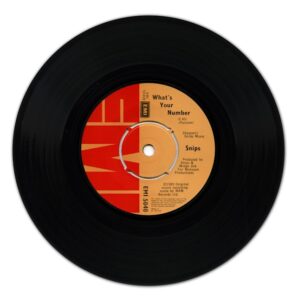Before the internet rewired our lives, we made mixtapes with cassettes, did our crossword puzzles on the backs of newspapers and passed around books that were close to falling apart. Of course, we can still do all of this, but on the whole, the entertainment world has a quicker rhythm. The experiences of old had a more tactile nature, and since then these analogue pastimes have evolved and, in some cases, found a second life in the digital world.
The Ritual of the Record Player to the Streamed Soundtrack
While nowadays, to listen to music, we merely have to open an app and click play, it used to be a bit more of a deliberate act. Vinyl players like the Technics SL-120 played music differently, and even the preamble was a process, taking the vinyl out, inspecting it in the light, cleaning it and gently placing it on the player. And now, according to the RIAA, global vinyl sales topped 43 million units in 2022, suggesting that the love of tactile immersion is returning. Platforms like Discogs have turned vinyl collecting into its own culture with a community-built forums, while spearheading a return of retro vinyl into the mainstream.

Print to Pixels: The Changing Face of Reading and Writing
While Kindle screens now glow as we read our current books before drifting to sleep, it used to all be paper or hardback. These were books composed on IBM Selectric typewriters or Olivetti. Those who wanted to read something niche had to join mailing lists; today’s accessibility has become the name of the game with apps like Libby. While when it comes to writing, there is a growing movement towards handwriting once more. Leuchtturm1917 are now popular among journaling enthusiasts, with the Typewriter Revolution sparking interest in vintage machines. Meanwhile, subcultures or niche interests can grow and thrive on platforms such as Substack, which hark back to years of newsletters and magazines.
Cards, Dice, and Bingo Calls: The Social Side of Games
Games have been a part of the social component of UK life for years, with games like cribbage, dominoes or darts. While during the mid-1900s, bingo halls popped up around the country, with over 1,600 at the peak of their popularity in the 80s, according to The Guardian. Although physical attendance dropped since the 90s, the game has undergone an uptick in popularity since. In part, this is due to online casinos which have reimagined the experience. They now offer free spins bingo, free scratchcard games or bonuses after an initial deposit, which have enticed players to start to play bingo online. In turn this has resulted in popularity of the in-person version which is said to be, according to Statista, worth £600 billion.
In each of these pastimes, the fusion of tradition and tech has kept the core experience and reinvented it for audiences. Streaming and swiping may define our routines now, but there is a yearning to return to previous traditions; consider the resurgence of instant cameras.
Convenience changed the game, but now the arts and entertainment have been revalued for emotional texture.

